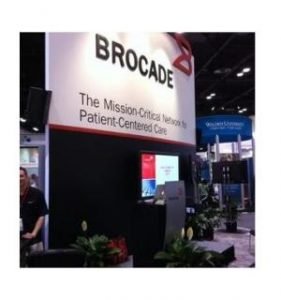Telecom Lead America: Enhancing its presence among telecom operators, Brocade has launched switching platform called Brocade VDX 8770 Switch.
The fabric networking major also announced enhancements to VCS fabric technology that will benefit data centers.

The Brocade VDX 8770 is designed for telecom operators and enterprises to simplify and scale out their data center infrastructure.
Brocade claims that VDX 8770 enables customers to expand a single VCS fabric up to 8000 switch ports with up to 384,000 VMs attached to the fabric – 20 times the scalability of the leading competitor.
Moreover, the newly launched switch offers port-to-port latency at 3.5 microseconds across all 1 Gigabit Ethernet, 10G, 40G ports – half the latency of the nearest competitor.
Recently, Brocade unveiled the Brocade ADX Series application delivery switches, capable of delivering highly scalable VXLAN (Virtual eXtensible Local Area Network) gateway services for virtualized cloud networks developed in partnership with VMware.
Using the Brocade ADX VXLAN gateway solution, Brocade and VMware customers can virtualize their networks at enterprise and service provider scale, and with hardware-based performance, using VXLAN.
Moreover, customers can use the Brocade ADX switches to connect VXLAN environments to the traditional Internet as well as run applications that span VXLAN and existing non-VXLAN networks. This enables organizations to use their current infrastructure while leveraging the benefits of VXLAN to support multitenancy and large-scale deployment of applications and virtual machines (VMs).
The new launches are significant as Brocade reported third quarter revenue of $555.3 million, up 10 percent year-over-year and 2 percent quarter-over-quarter.
Storage business revenue, including products and services, was $377.6 million, up 13 percent year-over-year and down 6 percent sequentially. Storage product revenue increased 17 percent year-over-year and decreased 6 percent sequentially.





